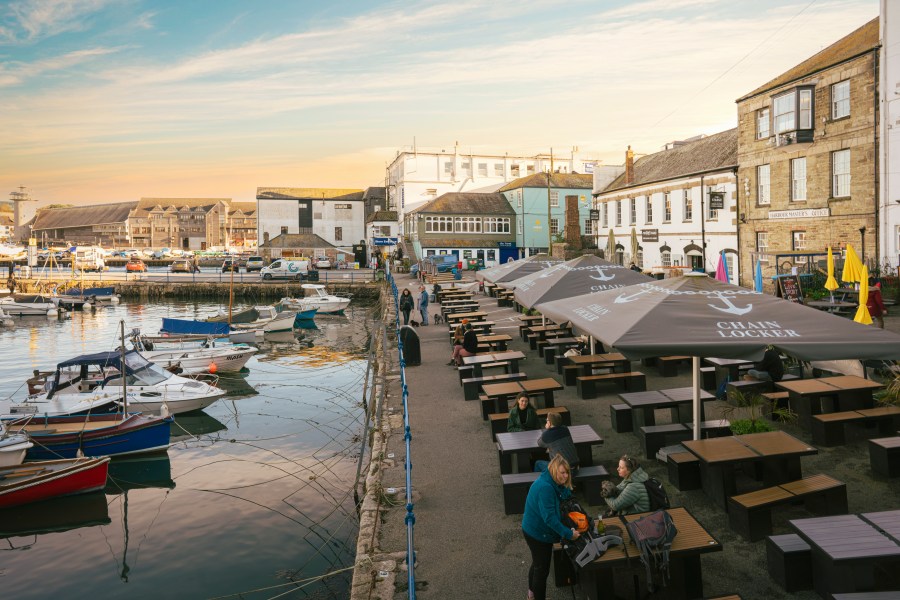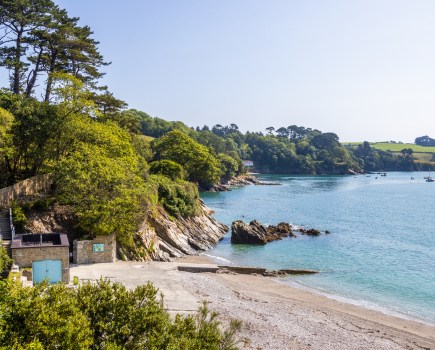Our marinas and harbours are working waters, busy with boats, industry and people. But they can also be a haven for marine life. CHRISSY HARRIS finds out more.
Early algae and lots of lovely limpets – it might not sound like the most exciting underwater scene but to Vicki Spooner, it’s just beautiful.
Vicki is environment manager at Falmouth Harbour and has been involved in a pioneering project to create a thriving marine habitat in the midst of one of the busiest ports in the UK.
Earlier this year, a series of ‘habitiles’ were attached to the waterside section of east wall, part of Church Street car park. These funny-looking hexagonal blocks with wiggly lines and grooves have been designed to provide places to live for a wide variety of inter-tidal marine species.
The idea is that underwater flora and fauna will start to colonise the attractive nooks and crannies. They in turn will attract small invertebrates and then larger marine animals, bringing all sorts of life to a once a fairly sparse expanse of water.
It’s early days here in Falmouth, but the sight of some slimy green stuff and the occasional aquatic mollusc is cause for much celebration.
“I’m mildly obsessed with it,” says Vicki, who has worked here for eight years in what she describes as ‘the best job in the world’. “I keep going down to the sea wall to have a look at the tiles and see what’s there.
“They’re already greening up really nicely. There’s some early algae starting to colonise and I’ve seen a few limpets and periwinkles. Basically, the holes in the tiles become tiny rockpools when the tide goes out.”
Falmouth’s habitiles are part of a drive to show that it’s possible to create a good marina work-life balance. With a little help and imagination, our busy, built-up harbours, marinas and ports can also support underwater wildlife.
“In the past, these places were often viewed as very industrial areas and not places to do with nature, or even places that cared about nature,” says Vicki. “We’re turning the tide on that in Falmouth. We’ve got this great example of how wildlife can exist alongside day-to-day life in a busy harbour.”
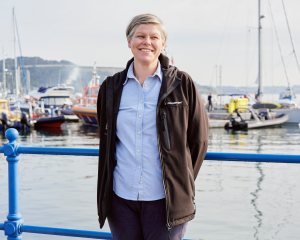
Vicki and the Falmouth Harbour team have been working on the habitile project with local environmental charity Our Only World, Falmouth Town Council and ARC Marine, a Devon-based company that provides environmentally friendly solutions to the marine industry.
The experts at ARC Marine (recently nominated for a prestigious Earthshot Prize) designed the textured habitiles, which were made locally in Truro using the waste products from the granite and quarrying industries.
Each one has been certified to ensure they don’t leak any toxic material into the sea.
Other initiatives being carried out in at Falmouth Harbour include protecting the area’s precious seagrass beds. These sensitive marine habitats have been marked using buoys to help raise awareness for boat users planning to drop anchor.
In addition, some of the harbour’s pontoons have been colonised by some curious-looking sea creatures, which Vicki and the team regularly monitor.
“We’ve got a lot of nudibranchs,” says Vicki, talking about the creatures also known as sea slugs that come in many colours and forms. “Are you old enough to remember the Fraggle Rock TV programme?” she asks (I am). “They look like little Fraggles – they’re amazing to see.”
Vicki is clearly passionate about her patch and determined to prove that marinas and harbours are not underwater deserts.
She says she’s just been in British Port Association meeting where there were 44 other people in environmental roles like hers, helping to raise awareness of what can lie beneath busy waters.
“It’s definitely a growing area,” says Vicki, before going off on habitile patrol. What would she love to see there today? “Oh, a cushion star,” she says, without hesitation. “That would be brilliant.”
Discover our harbourside holidays.
MAKING A DIFFERENCE
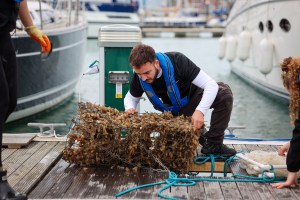
It’s not just Falmouth – there are so many good things going on below the surface of the UK’s harbours and marinas.
A team of marine researchers from the University of Portsmouth has been working with environmental organisations (including the Seahorse Trust) to install ‘BioHuts’ across marinas around the Solent.
These suspended metal cages, which contain clusters of oyster shells and hessian ropes, have been designed to simulate aquatic nurseries for small marine wildlife. The idea was developed from the Solent Oyster Restoration Project’s ‘broodstock’ cages.
The first set of BioHuts were deployed at Haslar Marina in 2021 to provide a safe habitat for some of the UK’s native species, such as the rare short-snouted seahorse.
The team of marine experts, including Stephanie Northen, Georgios Georgiou and Dr Ian Hendy, found the number of species inhabiting the BioHuts increased by more than 500 per cent at the Haslar site during the first six months of the habitat surveys.
Since then, more BioHuts have been installed at the marinas in Port Hamble (Southampton), East Cowes and Ryde Pier (Isle of Wight).
As well as sightings of seahorses and endangered European eels, plenty of other juvenile species have been spotted, including shrimps, crabs and small fish. Adult fish were seen using the BioHuts for feeding and scratching posts.
“It’s simulating a natural reef,” says research assistant Georgios Georgiou from the university’s Institute of Marine Sciences. “Every time we went out to collect data, we saw more and more species,” he adds, describing the team’s delight when they discovered the nurseries were being so well used.
ROCK STARS
A series of manmade rock pools have been placed around Whitby Harbour to boost biodiversity in the River Esk estuary.
In total, 24 man-made habitats of various sizes are being monitored above and below the water around Fish Quay, Endeavour Wharf and near Grape Lane. In addition, 15 ‘fish refuges’ have been placed around New Quay and Fish Quay.
It’s part of a project called, Better Estuaries and Coastal Habitats (BEACH) Esk, a partnership between the Environment Agency, Yorkshire Wildlife Trust and Groundwork North East, supported by private local landowners, Scarborough Borough Council and Yorkshire Water.
Researchers at the School of Biological and Marine Sciences at Hull University are monitoring the rockpools and fish shelters to find out which of the artificial additions is the most successful at attracting marine life.
ENJOY MARINA LIFE
Why not go and see these fascinating habitats for yourself? Here are some suggestions of where to eat, drink and stay:
Harbour View
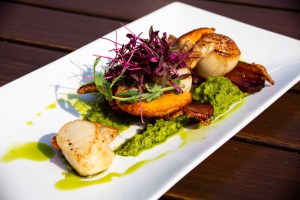
A restaurant, café and bar with great views over the water in Falmouth.
Chain Locker
Stay on Falmouth’s historic quayside, believed to be one of the town’s oldest buildings. The 16th-century pub offers stylish and contemporary dining, with boutique rooms.
Tidal Zone
Visit the National Maritime Museum Cornwall and head down and down to the Tidal Zone. This part of the museum takes you underwater where you can look out into the harbour through two large windows. Watch the marine wildlife as the tide rises and falls.
PS: The museum is also hosting a major exhibition about pirates, which launches in Marrrrch!
The Lightship
Climb aboard The Lightship for a unique dining experience. The restored 1940s vessel, formerly the Mary Mouse 2, was once a guiding light to ships travelling off the coast of Portsmouth. Today, she’s a floating bar and restaurant in Haslar Marina.
The Creek
The Creek at Haslar Marina has a choice of rooms with views, plus there’s a restaurant and bar at this waterside venue.
A 3km waterfront trail passes Haslar Marina, linking the Royal Navy Submarine Museum to Priddy’s Hard and the Explosion Museum of Naval Firepower in Gosport.
Humble Pie
Enjoy comfort food at its best at Humble Pie and Mash in the heart of Whitby. The homecooked pies, including peppered steak and ale and chicken, bacon and mushroom, are served in nostalgic 1940s surroundings. With thick gravy. Cor!
Bagdale Hall Hotel
Stay at Bagdale Hall Hotel, a Tudor Manor House, situated in the centre of the historic fishing port. There are six bedrooms in the main house, with a further eight rooms located in Number 4 Bagdale, a Georgian townhouse a short distance away.
Dash II
Explore Whitby Harbour on a little yellow boat. Dash II – part of the Whitby Coastal Cruises’ fleet – is small enough to navigate the River Esk inland, on a trip that takes passengers through the harbour and marina and towards the impressive viaduct near the village of Ruswarp. This trip boards from opposite The Angel Hotel. Tickets cost £5 per person.

